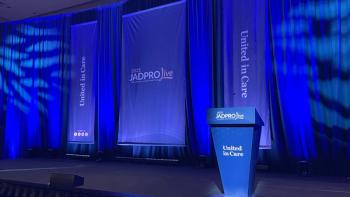
- December 2018
- Volume 12
- Issue 9
Structuring a Study of Interpersonal Communication in Breast Cancer Navigation
A team of researchers at the University of Pittsburgh School of Nursing set out to better understand the interpersonal communication components of breast cancer navigation services.
Sarah Gallups, PhD, MPH, RN
Sarah Gallups is assistant professor at Duquesne University School of Nursing in Pittsburgh, Pennsylvania.
In the 1990s, in an effort to address
Since their inception, patient navigator programs have spread rapidly across the country, with some adapted for dif­ferent types of cancers and patient populations. Many positive benefits of patient navigation have been documented in breast cancer care. Mammogram use increases, and time to diagnosis and treatment initiation is reduced.2 However, there is still a lot to learn about the patient navigator role and the key com­ponents of effective programs.
Interpersonal communication is considered a critical compo­nent in patient navigation. This powerful tool has the poten­tial to reinforce or impede the promotion of positive health outcomes. Currently, there is a lack of established evidence defining its specific attributes and applications in patient nav­igation. Therefore, a team of researchers at the University of Pittsburgh School of Nursing set out to better understand the interpersonal communication components of breast cancer navigation services.
CONCEPT MAPPING
The research team employed a community-engaged approach called concept mapping to identify the interpersonal communi­cation components of patient navigation in breast cancer care. The team chose this method because it facilitates the examina­tion and complex understanding of the range of factors, both positive and negative, that affect a phenomenon of interest from the viewpoint of stakeholders.3 Another strength of con­cept mapping is that participants are very active throughout the research process. They remain engaged to the end, ensuring that the final results accurately represent the perspectives of participants versus that of the researcher.3
The research team engaged with 3 different stakeholder groups from different health systems and networks in western Pennsylvania. A total of 31 participants included 13 patients with breast cancer who had worked with a patient navigator, 14 patient navigators who work in breast cancer care, and 4 administrators who oversee patient navigators in breast can­cer care. They included individuals from different races, ethnic­ities, age groups, educational backgrounds, income levels, and experience with patient navigation.
The participants worked with the research team over sev­eral months to complete the full concept mapping process, which involved several steps: brainstorming, sorting, rating, and interpretation.
The research team worked together with the
BRAINSTORMING EVOLVES INTO AN ACTION PLAN
As the first step in the concept mapping process, participants brainstormed responses to the prompt through an online por­tal. Responses were synthesized by the research team and then sorted into groups, based on their similarity through the online portal.
The groupings resulted in a “concept map,” a graphical depic­tion of the grouped, brainstormed ideas, which was shared with participants through in-person interpretation sessions. These sessions gave participants the opportunity to see their contri­butions to the research process. Participants shared their per­spectives on the results and generated potential action steps.
INTERPRETATION AND NEXT STEPS
Although the research team is still interpreting the findings, some essential components of interpersonal communication between patients and navigators are already clear. The in-depth interpretation sessions revealed several critical domains regard­ing specific interpersonal communication skills and behaviors of the patient navigator, which include:
- trust and relationships
- empathetic and compassionate support
- professional communication
Discussions among the patients, navigators, and administra­tors also identified action steps, which emphasized the need for additional training, networking, and resource sharing for navigators, as well as the need to increase awareness of the navigator role among patients and healthcare staff.
The team expects that the findings will create a foundation from which to improve patient navigation programs and pro­mote positive patient outcomes.
REFERENCES
- Freeman HP, Rodriguez RL. History and principles of patient navigation. Cancer. 2011;117(suppl 15):3539-3542. doi: 10.1002/cncr.26262.
- Freund KM, Battaglia T, Calhoun E, et al; Writing Group of the Patient Navigation Research Program. Impact of patient navigation on timely cancer care: the patient navigation research program. J Natl Cancer Inst. 2014;106(6):dju115. doi: 10.1093/jnci/dju115.
- Burke JG, O’Campo P, Peak GL, Gielen AC, McDonnell KA, Trochim WM. An introduction to concept mapping as a participatory public health research method. Qual Health Res. 2005;15(10):1392-410. doi: 10.1177/104973230527887
Articles in this issue
almost 7 years ago
Focusing on Young Nonsmokers With Lung Canceralmost 7 years ago
Supporting Children When a Parent Has Canceralmost 7 years ago
Lymphedema Treatment Starts With Educationalmost 7 years ago
Complementary Therapies for Prostate Cancer Treatmentalmost 7 years ago
Do the Write Thingalmost 7 years ago
Bringing Snow to Santa Monica - Nurses Help Grant a Patient's Last Wishalmost 7 years ago
Lung Cancer and the Young Adult NonsmokerNewsletter
Knowledge is power. Don’t miss the most recent breakthroughs in cancer care.





















































































